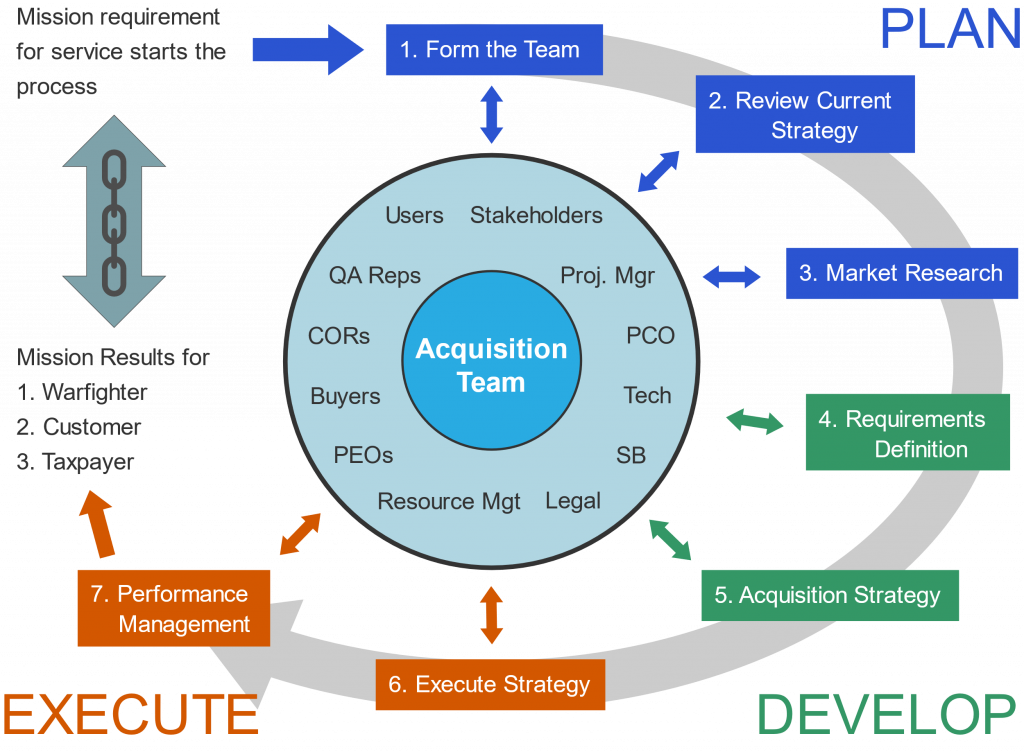How to Buy Public Opinion Research in the Federal Space
At ThinkNow we have the privilege of working with large organizations in both the public and private sectors. We’ve found that contracting in the private and public sectors varies considerably, and for good reason. In the private sector, contracting is fairly straight-forward since decision-makers don’t need to justify their purchases beyond their organizations. When dealing with public funds, however, the process often requires multiple steps and oversight. This works well when specifications are known and need to be exact, like when purchasing a new military aircraft engine or hiring medical personnel to staff a hospital. But what if the requirement is data?
The Government Buys Public Opinion Research
The U.S. population has and continues to change. Rapid growth is occurring among the largest population segments, Hispanic and Asian Americans, as well as those who identify as multi-racial. While the federal government has a significant amount of data on the perceptions and behaviors of the historical population, the data fails to address the unique thoughts and habits of today’s constituents. This gap often necessitates that the government seek research and survey data much like companies in the private sector seek data before a product launch.
For example, ThinkNow was instrumental in assisting the U.S. Army in gaining insights into how Hispanic and African American populations view career opportunities available in the uniformed services. We further assisted the Army in understanding the efficacy of the government’s advertising and marketing program. ThinkNow has also helped the Small Business Administration during rebranding initiatives, the State of California’s Healthcare Exchange, and multiple state-run lottery programs.
Understanding the Federal Buying Process
Let’s look at a typical scenario where the federal government determines the need to seek outside assistance to fulfill the services required. The following chart from the Defense Acquisition University shows the seven-step process that the government uses when seeking the services of a contractor (For clarification, “Market Research” in the context of this chart is the process of seeking qualified vendors in the marketplace).
While the acquisition process for all services sought is the same, the government often uses a series of contractor requests (Sources Sought & Requests for Information) to assist in the formulation of the Request for Proposal (RFP), which ultimately leads to the award of the contract.
Sources Sought are used to define a list of contractors with the knowledge and experience necessary to perform the activities required and to determine if sufficient competition can be achieved within specific socio-economic groups. This enables the government to leverage special programs such as Veterans, Small Business, Women-Owned or the SBA 8(a) programs to ensure underrepresented groups are afforded opportunities to participate in the process.
Often this is followed by a Request for Information (RFI), which is used to seek guidance from the industry on how the work might be accomplished and to get suggestions on the type of contract (cost or firm fixed price) vehicle. At times, the government will combine the Sources Sought and Request for Information into a single request. After reviewing the responses, the government may move forward with issuing a Request for Proposal which then triggers another set of reviews before a buying decision is made.
So, if the government follows a standard process regardless of the services sought, what makes government contracting for Research and Survey services different?
Why Buying Public Opinion Research is Different
In government contracting, the government usually owns all intermediate and final work products. However, much of public opinion research is performed using proprietary databases and custom research. To gather the data, a certain level of privacy is required, especially when it comes to Personal Health Information (PHI) and Personally Identifiable Information (PII), which cannot be shared unless expressed written consent is obtained. Also, many of the datasets used contain Proprietary Sources and Information that the contractor does not want to share with the government.
Keep in mind that anything that is delivered under a government contract can be shared by the government / requested by any constituent under the Freedom of Information Act (FOIA). Therefore, when negotiating these contracts, the contractor must identify the level and format of data that will be delivered under the contract.
More Steps Equals Less Ambiguity
While it’s true that private sector contracting is usually faster than in the public sector, the established public sector processes make it easier for buyers to compare competing proposals. Regardless, of contract type, the contractor needs to respond with the following:
1) A recap of the Statement of Objectives – a clear statement of the kind of research to be performed.
2) The steps that will be used to meet the objectives.
3) A timeline representing when the intermediate and final steps will be completed.
4) A representative sample of the format and content of each deliverable required under the contract.
This level of detail reduces uncertainty and ensures that both the buyer and seller agree on the scope of work, deliverables, and expected outcomes.
Lastly, the Cost to Perform must be presented in enough detail for the contracting team to evaluate the proposal and ensure costs are within government established ranges.
Contractors responding to bids for public opinion research will benefit from understanding the process the government uses to secure these services as well from having a transparent process by which to deliver these services without disclosing privileged sources. So, while the specificity required in government contracting can slow the process, it removes ambiguity, and that’s something we can all get behind.
